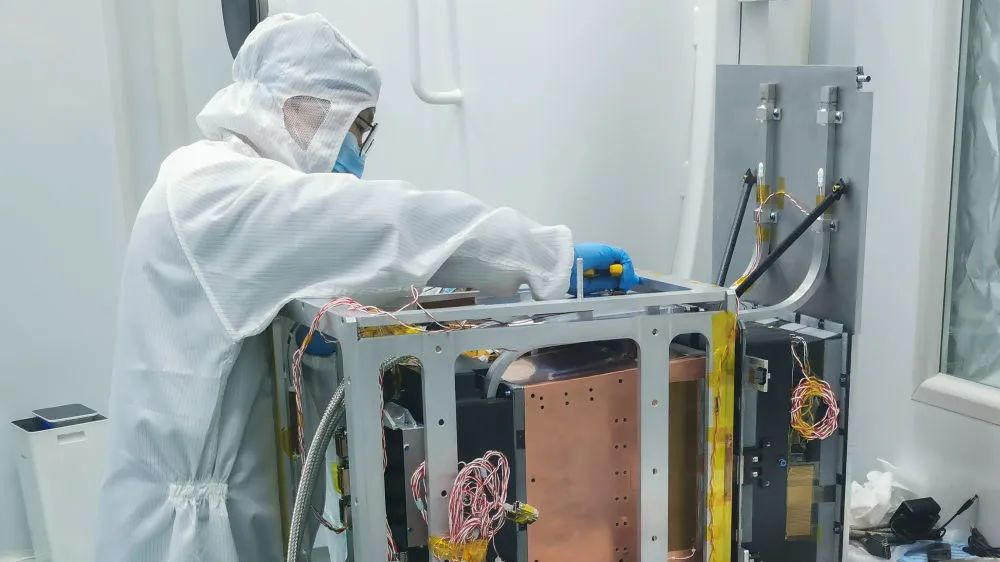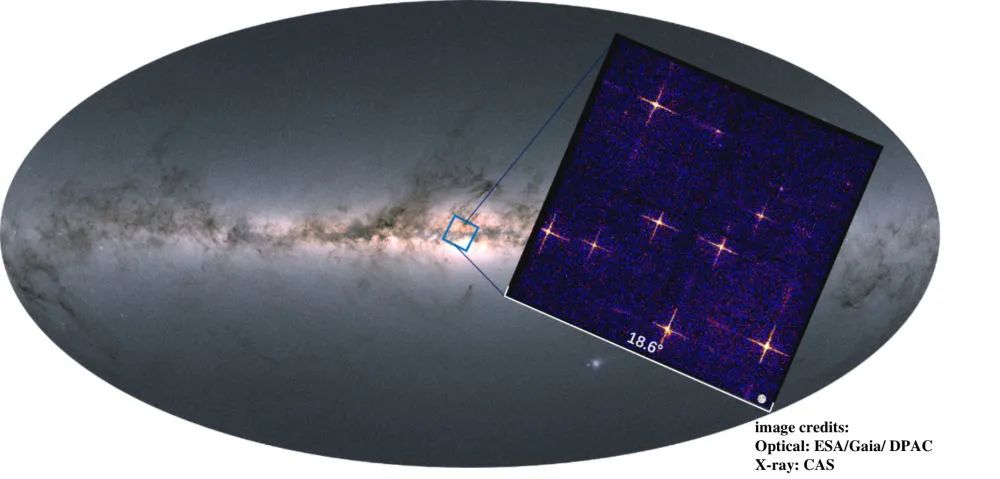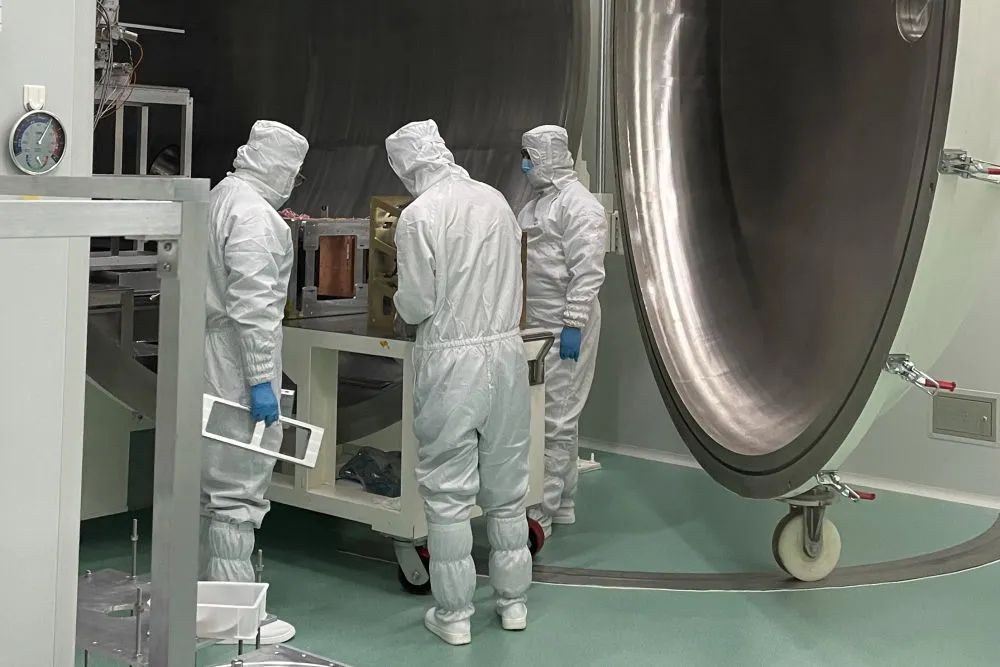
A Chinese scientist installs the Lobster Eye Imager for Astronomy, November 22, 2021. /NAOC
A Chinese scientist installs the Lobster Eye Imager for Astronomy, November 22, 2021. /NAOC
Who could have thought that lobsters could provide inspiration for a state-of-the-art telescope that could help us peer into the depths of the universe? But it did for scientists at the National Astronomical Observatories of the Chinese Academy of Sciences (NAOC) who developed the Lobster Eye Imager for Astronomy (LEIA), previously cited as a Wide-field X-ray Telescope (WXT).
Evidenced by images released in August, the most special feature of LEIA is its 36 micro-pore lobster-eye glasses and four large-array CMOS sensors.

Photograph of the Galactic center taken by the Lobster Eye Imager for Astronomy, August 2022. / CAS, ESA, Gaia, DPAC
Photograph of the Galactic center taken by the Lobster Eye Imager for Astronomy, August 2022. / CAS, ESA, Gaia, DPAC
The inspiration
Made up of numerous tiny square tubes pointing to the same spherical center, it was discovered early on that lobsters' eyes are different from others. This structure allows the lobster a large field of view.
In 1979, an American scientist proposed that the lobster eye be simulated to create a telescope to detect X-rays in space. But this idea failed to be realized for a long time until micro-processing technology improved sufficiently. Scientists then developed lobster-eye glasses, which are covered with tiny square holes as thick as a hair.
The X-ray Imaging Laboratory of NAOC began the research and development work on lobster-eye X-ray imaging technology in 2010, and finally made a breakthrough.
High spectral resolutions
The newly launched LEIA not only features the much-anticipated lobster-eye glasses, but also pioneers in installing CMOS sensors, which can process with high spectral resolutions.
"We realized the application of CMOS sensors to X-ray astronomical observations in space for the first time. It is an important innovation in X-ray astronomy detection technology," Xinhua cited NAOC scientist Ling Zhixing as saying.

Chinese researchers test the Lobster Eye Imager for Astronomy (LEIA), November 27, 2021. /NAOC
Chinese researchers test the Lobster Eye Imager for Astronomy (LEIA), November 27, 2021. /NAOC
"Taking advantage of its wide-angle vision, the telescope can monitor the X-ray variations in cosmic objects more efficiently, so to detect randomly occurring cosmic extreme events," he said.
According to Ling, the previous X-ray telescopes had a field of view roughly the size of the moon as seen from Earth, while this telescope is capable of covering a celestial region about the size of 1,000 moons.
"Twelve such telescopes will be installed on the future Einstein Probe satellite, and their field of view could be as large as about 10,000 moons," Ling said.
Launched into space in late July with a spacecraft atop a solid-propellant rocket, the LEIA is one of the 12 experimental modules for the Einstein Probe satellite, which is expected to be launched at the end of 2023. The mission is expected to discover cloaked black holes and map the distribution of black holes in the universe, and help us to study their formation and evolution.
(With input from Xinhua)